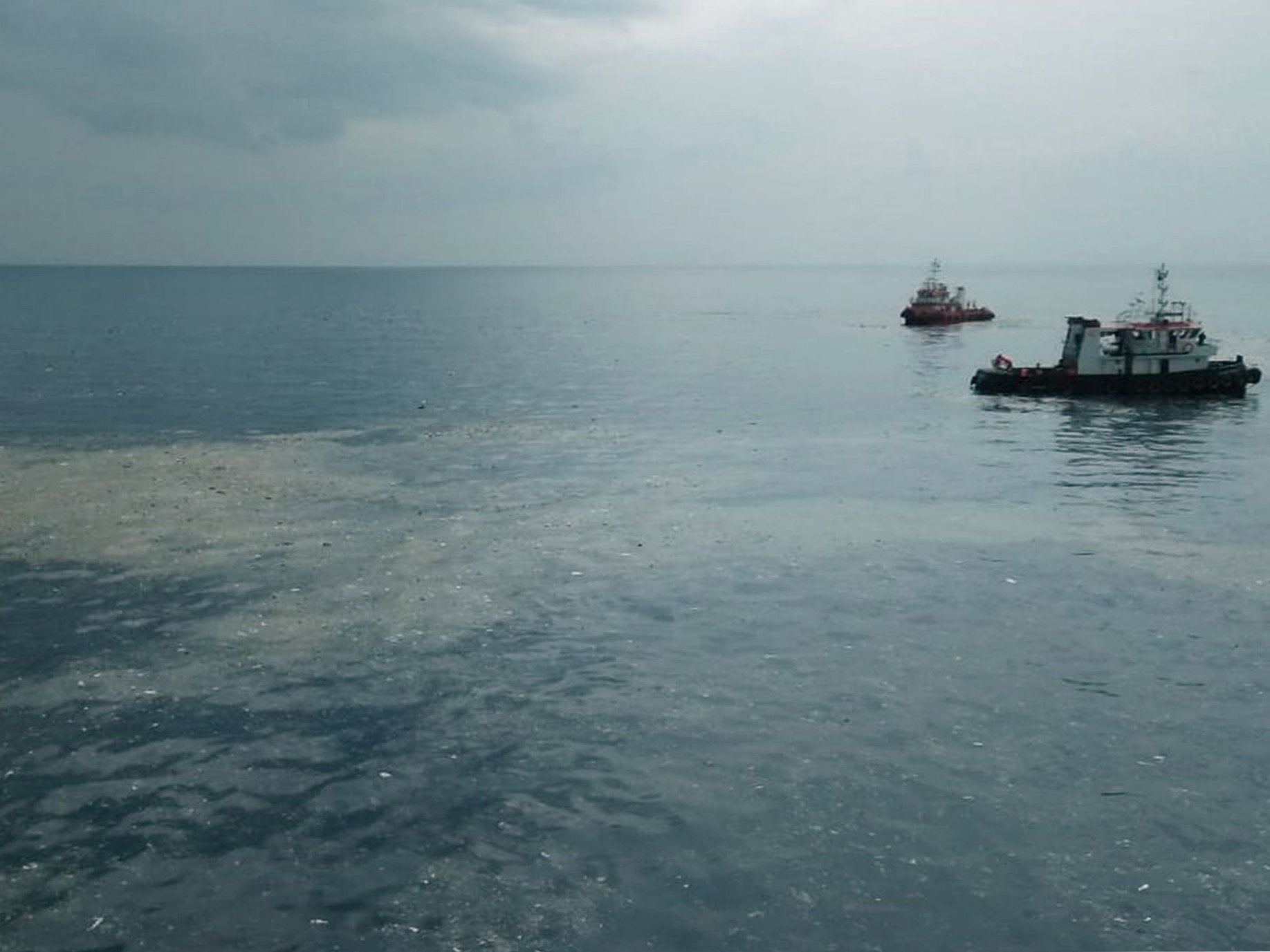Boeing condemned in Lion Air 737 Max accident report
189 died when the pilots of a Lion Air plane could not defeat an automated anti-stall system

Your support helps us to tell the story
From reproductive rights to climate change to Big Tech, The Independent is on the ground when the story is developing. Whether it's investigating the financials of Elon Musk's pro-Trump PAC or producing our latest documentary, 'The A Word', which shines a light on the American women fighting for reproductive rights, we know how important it is to parse out the facts from the messaging.
At such a critical moment in US history, we need reporters on the ground. Your donation allows us to keep sending journalists to speak to both sides of the story.
The Independent is trusted by Americans across the entire political spectrum. And unlike many other quality news outlets, we choose not to lock Americans out of our reporting and analysis with paywalls. We believe quality journalism should be available to everyone, paid for by those who can afford it.
Your support makes all the difference.Boeing started the sequence of events that led to the first 737 Max crash by installing an anti-stall system without telling pilots about its existence, purpose and pitfalls – that is the conclusion of investigators into Indonesia’s Lion Air crash almost a year ago.
All 189 passengers and crew died when the almost-new aircraft plunged into the Java Sea shortly after take-off from Jakarta on 29 October 2018.
Barely four months later, another Boeing 737 Max crashed in Ethiopia, killing all 157 occupants. Within days, the twinjet was grounded worldwide.
The Indonesian National Transportation Safety Committee’s final report into the first tragedy places primary blame for the loss of Lion Air 610 on the planemaker.
The Boeing 737 Max is the latest version of an aircraft more than half-a-century old. Because it has bigger engines mounted further forward than before, the plane’s aerodynamic properties are affected.
Anti-stall software known as Mcas (Manoeuvring Characteristics Augmentation System) was installed, says Boeing, “to enhance the pitch stability of the aeroplane – so that it feels and flies like other 737s”.
Mcas was designed to intervene, by tilting the nose of the aircraft down, when a potentially dangerous “angle of attack” between the airflow and the wing was detected.
But the system had fundamental flaws. It could be triggered by a single faulty sensor. The nose-down force applied when the aircraft was travelling at high speed could not be overcome by the pilots. And it activated repeatedly.
The report says: “A fail-safe design concept and redundant system should have been necessary for the Mcas.” It adds that Boeing “did not adequately consider the likelihood of loss of control of the aircraft”.
“The absence of information about the Mcas in the aircraft manuals and pilot training made it difficult for the flight crew to diagnose problems and apply the corrective procedures,” the report says.
The Indonesian report also criticises Lion Air’s maintenance team. The Boeing 737 Max was fitted with a faulty angle-of-attack (AOA) secondhand instrument bought from a supplier in Florida, which was not properly tested before being installed.
It malfunctioned the day before the accident, when a third pilot travelling as a passenger on the flight deck helped resolve the problem. But despite that near-disaster, the 737 was kept in service and assigned to flight 610 the following morning.
Mcas activated shortly after take-off from the Indonesian capital, causing mounting confusion on the flight deck. The captain initially managed to keep the plane flying. But when he handed over control to the first officer in a bid to resolve the problem, his colleague lost control and the plane crashed.
Last week it was revealed that a senior Boeing pilot had told a colleague three years ago that the anti-stall system was “running rampant” in a flight simulator during tests.
In response, Boeing’s president and chief executive, Dennis Muilenburg, said: “We commend Indonesia’s National Transportation Safety Committee for its extensive efforts to determine the facts of this accident, the contributing factors to its cause and recommendations aimed toward our common goal that this never happens again.
“We are addressing the [committee’s] safety recommendations, and taking actions to enhance the safety of the 737 Max to prevent the flight control conditions that occurred in this accident from ever happening again.”
The firm has updated the Mcas software “to provide additional layers of protection if the AOA sensors provide erroneous data”. It has also reduced the force applied by Mcas.
The company said: “The pilots will continue to always have the ability to override Mcas and manually control the aeroplane.”
In addition, Boeing is updating crew manuals and pilot training, “designed to ensure every pilot has all of the information they need to fly the 737 Max safely”.
Join our commenting forum
Join thought-provoking conversations, follow other Independent readers and see their replies
Comments